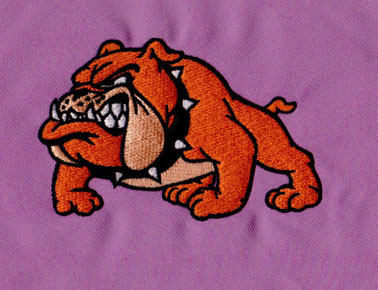Embroidery Designs: A Contemporary Trend in the Embroidering Industry
When you think of embroidery, you might conjure images of delicate hand-stitched patterns on vintage linens or traditional folk art. However, in the ever-evolving world of fashion and design, embroidery has not only endured but also evolved into a modern trend that's taking the embroidering industry by storm. Let's explore how embroidery designs are making a big comeback and transforming this age-old craft into a contemporary art form.
The Resurgence of Embroidery
In recent years, embroidery has experienced a renaissance, thanks in large part to its ability to seamlessly blend tradition with innovation. Here are some factors contributing to the resurgence of embroidery:
1. Nostalgia and Authenticity
In an era dominated by mass-produced goods and digital designs, people are yearning for something more authentic and unique. Embroidery offers a sense of nostalgia, reminding us of a time when handmade craftsmanship was cherished. Modern consumers are increasingly drawn to products that carry a touch of the artisanal.
2. Personalization and Customization
Embroidery allows for a high degree of personalization. Whether it's monogramming a towel or adding a custom design to a jacket, people love having items that are uniquely their own. This personal touch has made embroidery a sought-after choice in the fashion and gift industries.
3. Sustainability
As sustainability becomes a driving force in consumer choices, embroidery aligns perfectly with these values. It extends the life of clothing and accessories, reducing the need for disposable fashion. Additionally, many artisans are using sustainable and ethically sourced materials for their embroidery projects.
4. Fusion of Tradition and Modernity
Embroidery is no longer confined to traditional textiles. It has found its way into modern streetwear, haute couture, and even tech. Designers are using embroidery to bridge the gap between the old and the new, creating pieces that are both nostalgic and cutting-edge.
The Role of Technology
One of the most exciting aspects of the modern embroidery trend is the role of technology in pushing the boundaries of what's possible. Here's how technology is revolutionizing embroidery:
1. Digital Design and Software
Designing embroidery patterns has never been easier, thanks to digital design software. Artists can create intricate designs and convert them into embroidery files with precision. This has opened up endless possibilities for creativity.
2. Computerized Embroidery Machines
Computerized embroidery machines have become more accessible and affordable. These machines can replicate complex designs with speed and accuracy, making large-scale embroidery production feasible.
3. Integration with Fashion Tech
Embroidery is now finding its place in the world of fashion technology. From LED-embedded fabrics to garments with embedded sensors, designers are using embroidery to fuse fashion with functionality.
Embroidery in Various Industries
Embroidery is not limited to fashion alone. It has transcended boundaries and is being embraced by various industries:
1. Home Decor
From embroidered throw pillows to wall art, embroidery has become a staple in home decor. It adds a touch of sophistication and elegance to living spaces.
2. Corporate Branding
Businesses are turning to embroidered logos and designs on uniforms and promotional items. This not only promotes brand identity but also adds a touch of professionalism.
3. Art and Craft
Embroidery has emerged as a legitimate form of contemporary art. Artists are pushing the boundaries of traditional embroidery, experimenting with materials and techniques to create captivating and thought-provoking pieces.
Conclusion
Embroidery designs are experiencing a renaissance in the modern world. This resurgence is driven by a desire for authenticity, personalization, and sustainability, all of which embroidery excels at. Moreover, technology has played a pivotal role in expanding the possibilities of embroidery, making it a versatile and dynamic art form.
As embroidery continues to evolve and adapt to contemporary needs and tastes, it's safe to say that this timeless craft is here to stay, enriching our lives with its intricate beauty and the stories it weaves with every stitch. Whether on clothing, accessories, or art pieces, embroidery designs are leaving an indelible mark on the modern creative landscape.


